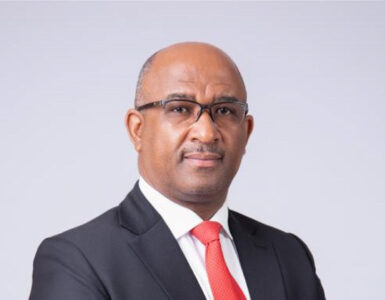Alarmingly, government debt has more than double as a percentage of GDP since 2011, from 20.8% to approximately 53% in 2015 according to CABRI1. This recent trend tells us one of, or a combination of factors are at play. Firstly, due to slow economic growth, tax collections have been lower than was projected and government expenditure has outpaced tax revenue collections over this period. On the other hand, the Zambian government expenditure might have been growing strongly, which is prudent and counter-cyclical fiscal policy in the context of slow growth.
However, following the current trend, Zambia is likely to fall into the debt trap within the next couple of years if economic growth does not pick up so that the government can ‘grow out of its debt’. Although, it may appear counterintuitive in the context of slow growth, different policy measures have to be considered such as fiscal austerity to curb the increasing government debt. Other policies such as raising taxes may be impractical, particularly due to the fact that country is currently facing constrained economic growth.
Cancellation of investment projects highlights the fact that Zambia’s greenfield investment prospects have all but halted most recently. Announced Greenfield investment projects have declined from US$3 billion in 2014 to US$562 million by the end of 2015, signalling a strong foreign capital retraction from Zambia in favour of other countries. Zambia has also experienced a significant decline in inward portfolio flows since 2014, plummeting from US$ 3.2 billion to just under US$ 1.7 billion according to recent UNCTD2 data, which this has placed a greater burden on the Zambian government to fund domestic fixed investment at a time when the government has limited fiscal space and burgeoning debt. The fall in portfolio flow over this period places more fiscal pressure on the Zambian government by virtue of a reduction in the availability of global finance amid the current constrained domestic sources of government spending.
In November 2016 the IMF sent out a team to provide a report on the current state of affairs in Zambia. The economy is challenged by external shocks and an “unbalanced policy mix”. Economic growth is still subdued due to recurrent electricity supply shortages, declining exports, and subdued private consumption and investment in 2016.
According to the IMF holds, Zambia’s current economic challenges may be overcome with resolute and timely policy action such as the recent reduction of fuel prices and the government announcement of a possible reduction in electricity subsidies. If these measures are indeed taken and supported by structural reforms, the Zambian economy may rebound from its recent subdued levels in the medium to long-term. Some structural changes that are required include ensuring that current public finance inefficiencies are mitigated while supporting the energy sector to grow and expand electricity generation and supply. Diversification from a commodity-based economy is also a prerequisite for a recovering Zambian economy and will stimulate trade expansion with its SADC members and the greater international community.
Politically, Zambia has undergone significant changes with the amendment of its constitution which introduced a 50% +1 voting requirement for the winning candidate of the national general election, as well as a presidential running mate. The election of Edgar Lungu as state President in 2016 was a heated contest, with him narrowly defeating his closest rival Hakainde Hichilema by a 2.7% margin. Lungu won the election with a 50.32% majority vote, literally a couple of thousand votes over the threshold to avoid a second ballot. One only hopes that Lungu can steer the Zambian economy on the path to attaining sustainable growth. One thing is certain though, the Zambian government has a number of challenges to navigate.
1 Collaborative Africa Budget Reform Initiative
2 United Nations Conference on Trade and Development





























